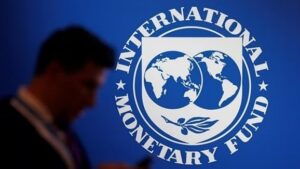GS3 – Indian Economy

Context:
The International Monetary Fund (IMF) has released its latest World Economic Outlook, projecting global economic stability despite persistent risks. India remains a standout performer, with its growth forecast revised upward.
Global Economic Trends
- Growth Forecasts:
- Global GDP growth is now projected at 3.0% in 2025 and 3.1% in 2026, both slightly higher than earlier estimates.
- The resilience is driven by short-term liquidity infusions and front-loaded trade, rather than lasting structural reforms.
- Inflation and Fiscal Challenges:
- Global inflation is expected to moderate to 4.2% by 2025, reducing pressure on central banks.
- However, rising public debt is straining fiscal policy options across both developed and emerging economies.
- Monetary and External Risks:
- Higher interest rates have elevated sovereign borrowing costs and increased credit default risks.
- A weakening dollar has improved global liquidity but simultaneously pushed up import bills and inflation in many countries.
- Trade Dynamics:
- Trade growth may decelerate in 2026 as the current burst in global activity stabilises.
- The trend of “slowbalisation” is intensifying, with the global trade-to-GDP ratio projected to drop to 53% by 2030.
- Risks like tariff wars, geopolitical conflicts, and supply chain fragmentation continue to pose serious threats to recovery.
India’s Growth Outlook
- Revised Forecast:
- India’s GDP growth is now projected at 6.4% for both 2025 and 2026, marking the highest among major economies.
- Growth Drivers:
- The revision is attributed to strong external demand, tariff relief, and improved global liquidity conditions.
- Structural Strengths:
- Low inflation, sustained domestic demand, and continued economic reforms have contributed to robust performance.
- India is rapidly converging with advanced economies in terms of GDP scale and output, indicating a shift in the global economic centre of gravity.




